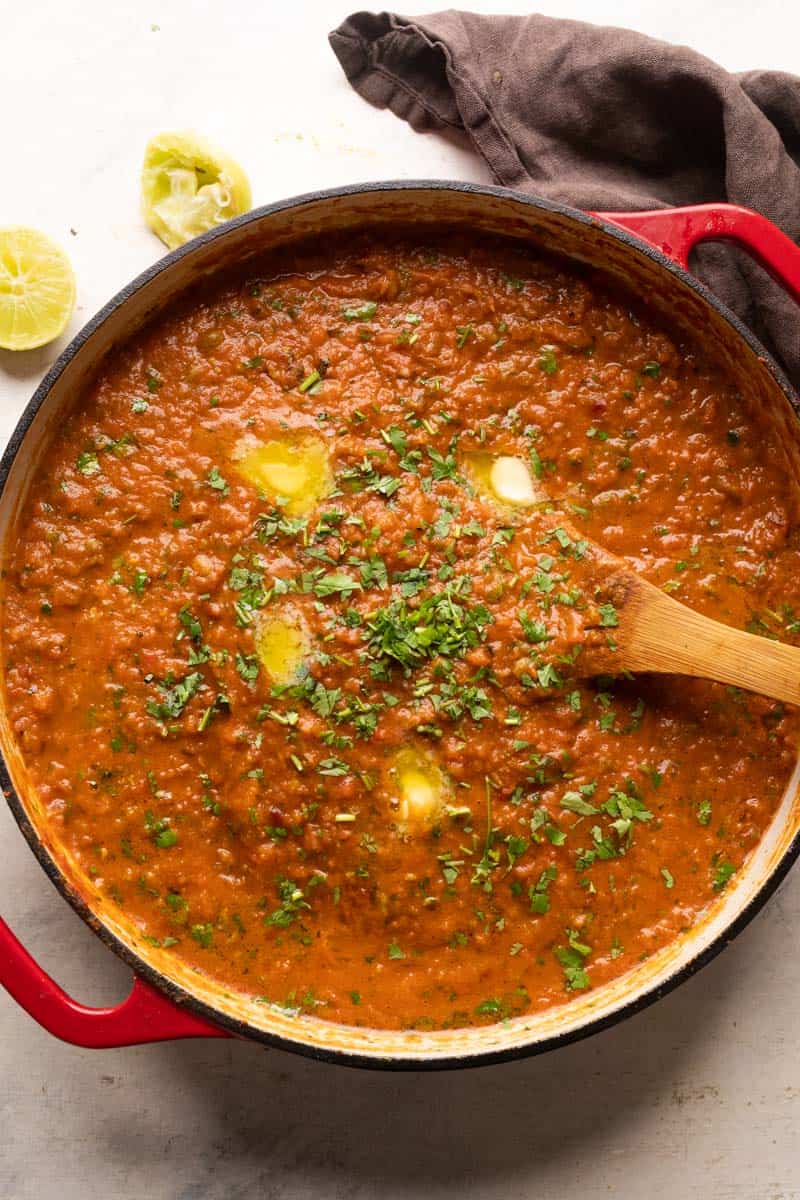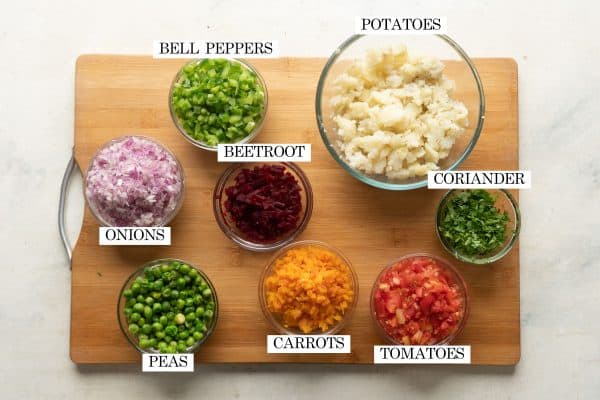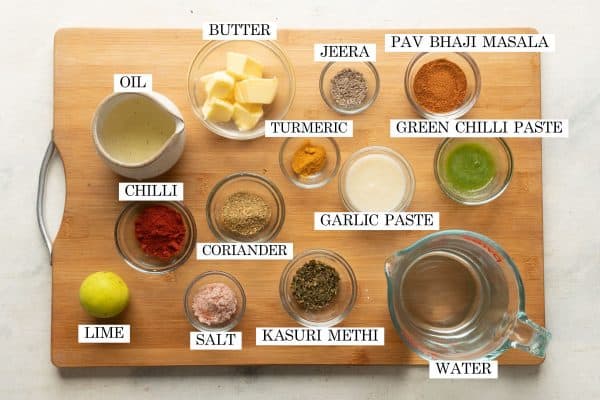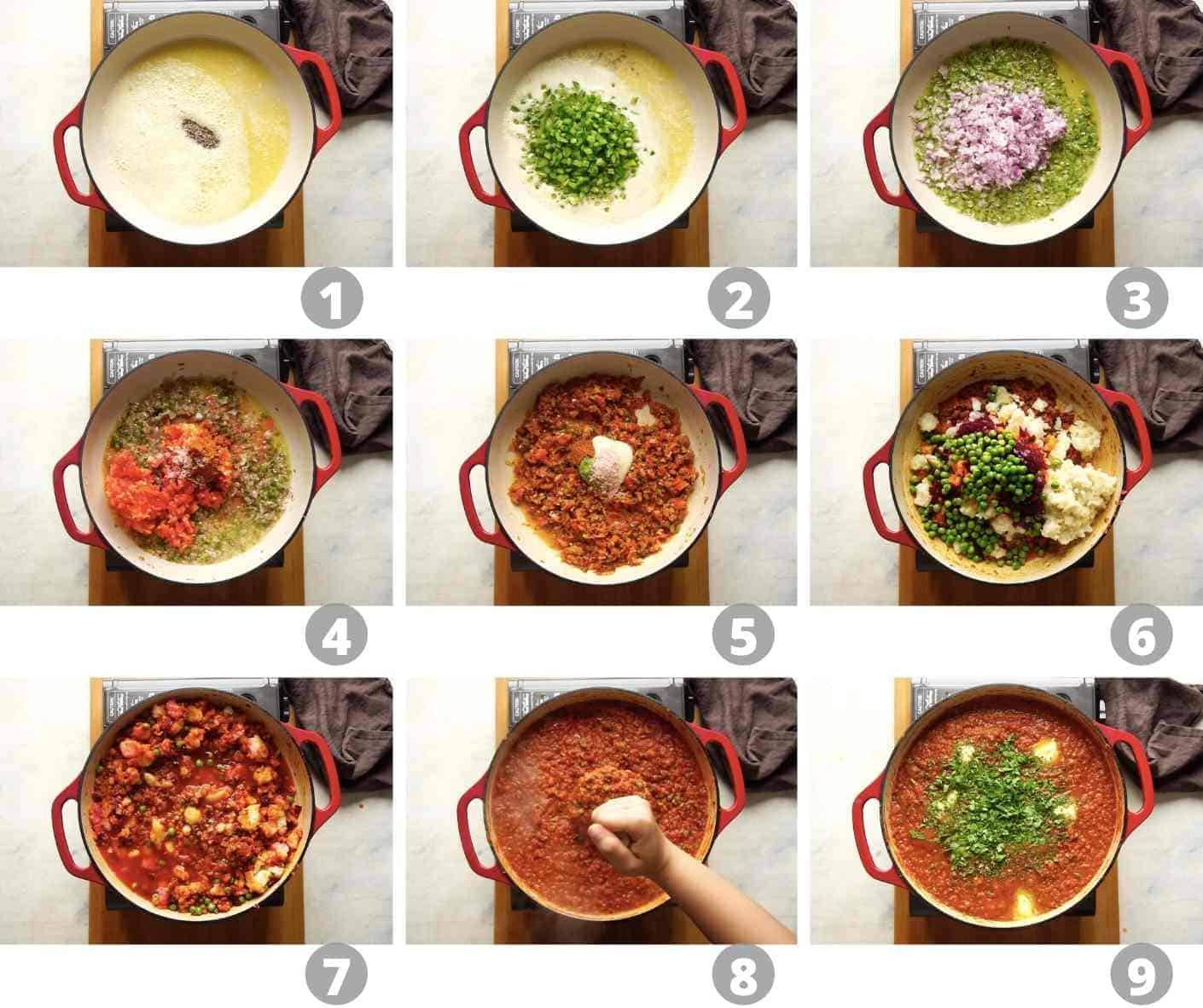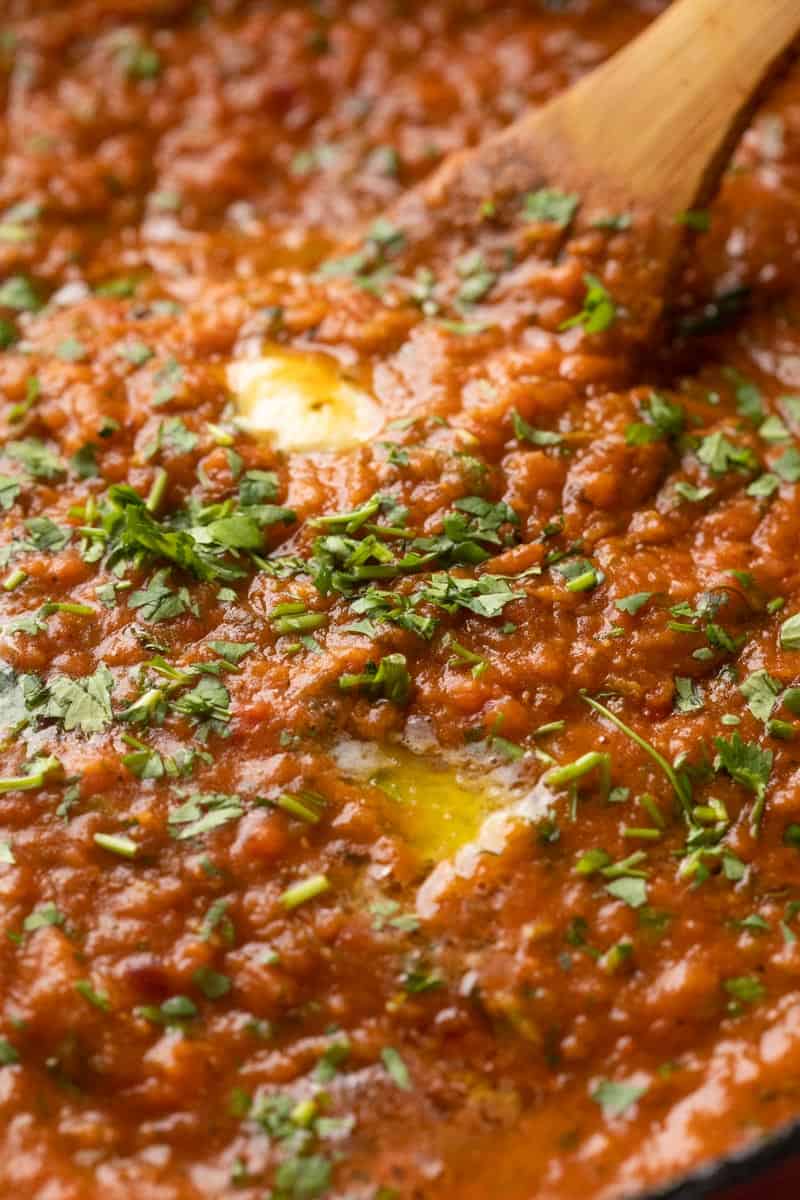on Sep 29, 2021, Updated Oct 14, 2021 If you are from India you already know the cult following that Pav Bhaji has. If you live outside the country and have never tasted this, we need to change that asap. Like most people, I grew up eating pav bhaji on the street at the local thela or kiosk where the bhaji would be freshly tempered once the order was placed, the pav or buns would be lightly tossed in butter on the hot pan after the bhaji was done. The smell is unbeatable. The steaming hot pav bhaji is unbeatable. And recreating this at home is really difficult. But we did multiple round of tests, many variations and found the perfect recipe that gives us that amazing street style taste at home.
This Pav Bhaji recipe is
Spicy and full of flavour. I’m showing you how to use basic store bought pav bhaji masala and turn it into the most delicious bhajiHas a fantastic texture. The key to good bhaji is mashing the vegetables as you go. Keep adding water and mashing cooked vegetables till everything is homogenous but isn’t completely smoothButtery. Just one word because there is no pav bhaji without lots and lots of Amul Butter (an Indian brand of salted butter whose unique taste makes pav bhaji so amazing)
If you don’t believe me, just watch the first few seconds of the video below to see how good this looks!
How to make Pav Bhaji + Ingredients
Here’s everything you need to make pav bhaji at home Vegetables: Prep all your vegetables ahead. The vegetables need to be boiled or pressure cooked so that they are tender and can be easily smashed between the fingers. These can be prepped up to a day ahead. I prefer cooking the vegetables separately because the cooking time of each vegetable is different. But if you are short on time, you can roughly chop everything and pressure cook or boil them together till tender and then drain any extra water
Oil & Butter: Pav Bhaji needs a lot of fat, particularly butter to get that texture and flavour. The potatoes and vegetables keep soaking up the butter as you cook so it won’t feel oily when you eat it. Use a neutral flavoured oil, and Amul Butter if you can get your hands on itSpices: Jeera (cumin seeds), pav bhaji masala (I generally use Everest), Chilli Powder (for an extra hit of colour and heat), coriander powder, turmeric powder and kasuri methi (dried fenugreek leaves)Ground Pastes: Garlic paste which is basically garlic ground with water to make a thick paste and Green Chilli Paste which is green chillies ground with water. A lot of recipes use ginger garlic paste, but after many tests we realised that the key to really good street style pav bhaji is just garlic and green chilli pastes.Lime: Lots of lime to balance all the flavours and add some freshness and tang
This recipe does need some time, patience and prep work but the result is amazing. It also makes a large batch that’s enough for 6-8 people and that means you’ll always have leftovers. And trust me, day old bhaji tastes even better!
Richa’s Top Tips to make Pav Bhaji
Vegetables: I only recommend hardy vegetables like potatoes, carrots, capsicum, onions, beetroot and green peas for this recipe. A lot of people like to add cauliflower, but personally I don’t enjoy the flavour. If you really want to use cauliflower, use only 1/2 cup. Cauliflower has a strong flavour and can overpower the flavour of the pav bhaji if too much is used Pav Bhaji Masala: If you are super ambitious, you can make your own pav bhaji masala, but with this recipe you can easily convert store bought pav bhaji masala (my favourite – Everest Masala) into stellar pav bhaji! Natural Red Colour: A lot of pav bhaji vendors on the street use colour to give pav bhaji that distinct reddish orange colour. My secret ingredient is cooked beetroot which adds that perfect colour naturally Use a wide, shallow dish: Pav Bhaji should be made in a wide, shallow dish. I’ve used a 14 inch shallow pan for making my bhaji in the video below. It makes sauteing and mashing much easier. A kadhai or wok is not the best for making this recipe Add water in parts: Adding water in parts and mashing the vegetables as you go helps improve the flavour and makes it more homogenous. It’s also much easier to control the texture of the bhaji Don’t skimp on butter: Please don’t skimp on the butter. This is not a healthy recipe and it really needs that butter for that perfect texture and taste
Serving Suggestions
Pav Bhaji tastes best when served with chopped onions, coriander, lime wedges and buttery ladi pav or mumbai style pav buns, which are also used for vada pav. But if you don’t have those, bread, dinner rolls, hawaiian rolls or even burger buns will work in a pinch! The point is, you don’t want to miss this recipe! I really hope all you Pav Bhaji enthusiasts try this recipe and love it as much as I do!
Watch the Recipe Video

